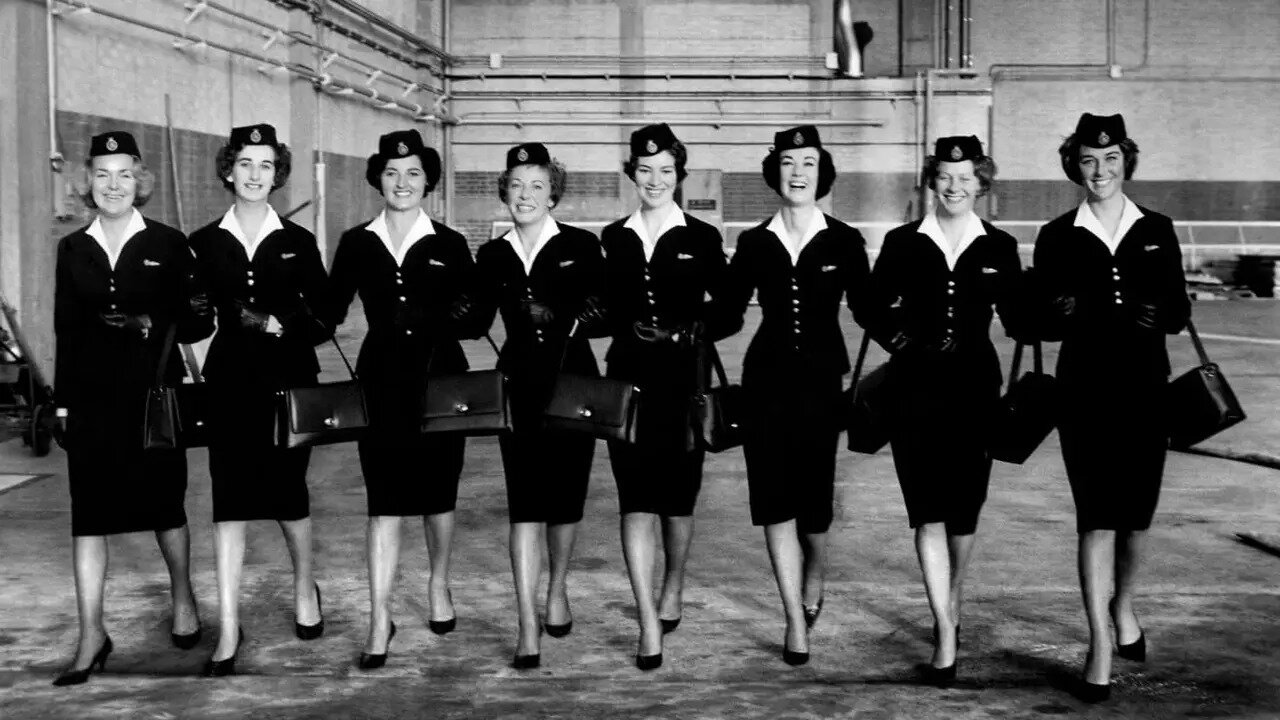Premium Only Content

1959 TOKYO COLD CASE: JAPANESE BOAC STEWARDESS, TOMOKO TAKEKAWA. Crime, scandal, intrigue from Japan
1959 TOKYO COLD CASE: JAPANESE BOAC STEWARDESS, TOMOKO TAKEKAWA. Crime, scandal, intrigue from Japan @tokyoreporter
Before Ghosn: Looking back at unsolved BOAC stewardess murder of 1959
By Tokyo Reporter Staff on May 23, 2020
https://www.tokyoreporter.com/crime/before-ghosn-unsolved-boac-stewardess-murder-of-1959/
TOKYO (TR) – Last week, police in Massachusetts arrested Michael Taylor, a former special forces soldier, and his son, Peter Taylor.
The pair are wanted by law enforcement in Japan in connection with dramatic escape of Carlos Ghosn, the French-Lebanese former automotive magnate, from Tokyo to Lebanon late last December.
While the Taylors are expected to be extradited to Japan, Ghosn, who was under prosecution for a variety of financial crimes at the time he fled, remains in Lebanon, out of the reach of Japanese authorities.
The flight of Ghosn brings to mind another infamous case involving a foreigner undergoing legal difficulties in Japan. In 1959, police in Tokyo questioned Father Louis Charles Vermeersch, then a 38-year-old Catholic priest, over the murder of airline stewardess Tomoko Takekawa.
During the investigation, the Belgium-born priest was never arrested. But like the saga involving Ghosn, the case, which as never solved, captivated the nation and raised questions about what justice means in Japan.
“Probably strangled”
At around 7:40 a.m. on March 10 of that year, Masayoshi Kubo, a male office worker, spotted the body of Takekawa, a 27-year-old stewardess for British Overseas Airways Corporation (BOAC), floating face-up near the Miyashita Bridge in the Zenpukuji River in Suginami Ward.
Police identified the body as being that of Takekawa after finding her high heels, scarf, handbag and parasol scattered nearby. Her body was clothed in a green two-piece suit, a silk blouse, white bra and corset, white underwear and nylons.
The body showed no signs of external wounds, which led investigators to initially think it was a suicide by drowning.
However, drowning was soon ruled out as the cause of death. Tokyo Metropolitan Police later said that the results of an autopsy, conducted at Keio University Hospital, showed only a small amount of water in her lungs. Wire service UPI reported that marks on her neck “indicated that she was probably strangled.”
The results of the autopsy also revealed that she had the semen of two men — possibly of blood types O and A or AB — in her system and on her underwear, a development that caused police to begin seeking out her associates.
“It was for a consultation”
In 1948, Father Vermeersch came to Tokyo, where he was ordained. At the time of the incident, he worked as the head of accounting at Don Bosco Home, a publisher of religious titles. The publisher fell under the Salesians of Don Bosco order. The office was at the Shimoigusa Catholic Church in Suginami.
He became a person of interest after police learned that his name was written in a notebook belonging to Takekawa. They also learned that a special delivery parcel arrived from the publisher at the dormitory where Takekawa lived on March 7, three days before her body was found. Police believed at the time that a letter from Father Vermeersch inside the parcel asked Takekawa to meet with him, UPI reported, citing a Tokyo newspaper.
On Sunday March 8, Takekawa, a Catholic, attended Mass. Later that day, she visited her uncle’s residence near the church for lunch. At around 3:00 p.m., she left for “a birthday party” in Ushigome, Shinjuku. She was never seen again.
UPI reported that she was known to have taken the letter when she departed her dormitory earlier that day. That letter as not present upon the discovery of her body two days later.
Though there was speculation in the media that Father Vermeersch had gone missing in April — perhaps even had fled the country — that was not the case. In fact, he agreed to undergo questioning. In the company of a secretary from the Vatican and a lawyer, the priest was grilled by renowned detective Hachibe Hiratsuka, who presided over a number of high-profile investigations after the end of World War II. The questioning took place in two periods, one between May 11 and 13 another on May 20 and 22.
During the sessions, Father Vermeersch admitted to taking Takekawa to a hotel in the Harajuku area of Shibuya Ward. “It was for a consultation,” he reportedly said in denying that they were involved in a relationship. “That’s all that it was.”
The sessions wore on Father Vermeersch, who began suffering from anemia. At one point exhaustion caused him to enter a hospital, which wound up stalling the investigation.
READ THE REST OF THE ARTICLE AT:
https://www.tokyoreporter.com/crime/before-ghosn-unsolved-boac-stewardess-murder-of-1959/
-
 1:02:20
1:02:20
Trumpet Daily
2 days ago $28.93 earnedObama’s Fake World Comes Crashing Down - Trumpet Daily | Dec. 20, 2024
45.1K39 -
 6:29
6:29
BIG NEM
22 hours agoCultivating God Mode: Ancient Taoist NoFap Practices
36.9K9 -
 30:53
30:53
Uncommon Sense In Current Times
1 day ago $8.86 earned"Pardon or Peril? How Biden’s Clemency Actions Could Backfire"
56.3K4 -
 40:01
40:01
CarlCrusher
21 hours agoSkinwalker Encounters in the Haunted Canyons of Magic Mesa - ep 4
52.4K2 -
 59:44
59:44
PMG
1 day ago $6.77 earned"BETRAYAL - Johnson's New Spending Bill EXPANDS COVID Plandemic Powers"
58.7K22 -
 6:48:50
6:48:50
Akademiks
19 hours agoKendrick Lamar and SZA disses Drake and BIG AK? HOLD UP! Diddy, Durk, JayZ update. Travis Hunter RUN
180K30 -
 11:45:14
11:45:14
Right Side Broadcasting Network
9 days agoLIVE REPLAY: TPUSA's America Fest Conference: Day Three - 12/21/24
363K28 -
 12:19
12:19
Tundra Tactical
19 hours ago $13.27 earnedDaniel Penny Beats Charges in NYC Subway Killing
76.7K14 -
 29:53
29:53
MYLUNCHBREAK CHANNEL PAGE
1 day agoUnder The Necropolis - Pt 1
165K67 -
 2:00:10
2:00:10
Bare Knuckle Fighting Championship
3 days agoCountdown to BKFC on DAZN HOLLYWOOD & FREE LIVE FIGHTS!
63.9K3